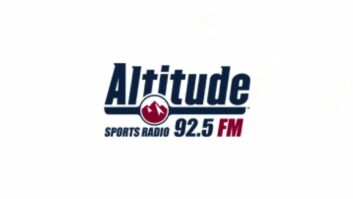
Planning to shut down British AM (MW) radio should begin, while analog FM services should stay on air until at least 2030. These are some of the key recommendations in the just-released Digital Radio and Audio Review, which was commissioned by the U.K. government in February 2020.
Declining audience share is the reason for ending British AM. According to the Review: “AM — which according to estimates calculated for the Review now accounts for just 3% of all radio listening — has reached the point where the BBC, commercial radio and Ofcom need to prepare for the retirement of national services. However, traditional radio, including FM services, is valued by many listeners — particularly those who are older or vulnerable, drive older cars or live in areas with limited DAB or broadband coverage. On current trends, therefore, the Review’s conclusion is that FM will be needed until at least 2030.”
[Read: Swiss FM Shutdown Reverts to Original 2024 Date]
This being said, research conducted for the Review by the strategic advisory firm Mediatique estimates that analog radio “will account for just 12–14% of all radio listening by 2030.” As a result, the Review’s suggested reprieve for FM is time-limited: “the U.K. radio industry should begin preparing the ground for a possible switch-off of analog services at some point after 2030,” it said.
Strong, for Now
According to the Review, 89% of the U.K.’s population listens to radio every week, “a figure which has remained remarkably consistent in the last decade,” it said. These listeners have access to 333 analog (AM/FM) and 574 DAB stations, plus “over 300 analog community radio stations which collectively reach over 1 million listeners every week,” the Review reported. As well, a third of U.K. adults own smart speakers, with live radio accounting for 64% of audio they’re listening to.
The downside: Radio’s dominance in the U.K. market is expected to decline over time.
“While it is impossible to make entirely accurate projections too far into the future, the Review’s conclusion is that live radio will still account for over 50% of U.K. audio listening in the mid-2030s,” the document said. “Live radio dominates in-car listening, accounting for 82% of all in-car listening hours. However, the growing availability of connected audio services in cars (via phone mirroring or natively) represents an increasing challenge to the prominence of radio in the car as streaming services are presented alongside or even more prominently than radio services.”
The Review projected this decline in U.K. radio listenership based on the current audio source preferences of different U.K. age groups. “Among 15–24 year olds smartphones are the first choice, accounting for 38% of audio consumption, with DAB accounting for 22% and FM/AM radios just 11%,” it explained. “Among 25–34 year olds, smartphones account for 27% of audio consumption, against 26% for DAB radios and 19% for FM/AM. In contrast, among listeners aged 55 and over, DAB radios account for 41% of all audio consumption and FM/AM radios a further 31%, with smartphones accounting for only 5%.”
DAB Slows, Smart Speakers Surge
Since the launch of digital radio in 1995, more than 27 million DAB sets have been sold in the U.K., with two out of every three households claiming to have a DAB radio for in-home use, said the Review. As well, “Around 40% of all radio listening, in-home and in-car, is now via a DAB device.”
Falling DAB receiver costs have helped to drive sales. “This trend is particularly apparent over the past 10 years, as the DAB module cost has reduced costs for manufacturers while module capabilities have improved — for example, in terms of signal attenuation and energy use,” the Review said.
The bad news: “In spite of the evident demand from listeners for the services delivered on DAB, recent years have seen a decline in radio device sales and a slowing of DAB take up,” said the Review. Worse yet, “Mediatique forecasts that the proportion of households that regularly use DAB will fall gradually year on year from 40% currently to 32% in 2035.”
“Estimates prepared by market research consultancy Futuresource Consulting show these trends from a different perspective,” the Review continued. “According to Futuresource projections, ownership of DAB radios has now plateaued and may start to decline as new sales fail to maintain the installed base, implying that some owners will not replace their device when it reaches the end of its working life. Futuresource’s five year forecast up to 2025 shows the annual market for DAB domestic radios will fall to 570,000 per annum.”
In contrast, the Digital Radio and Audio Review predicted a rosy future for smart speakers. “According to Mediatique’s forecast, smart speaker penetration will grow to 62% by 2035,” it said. “Futuresource has forecast that the market for smart speakers will be sustained, with shipments continuing at a rate of over 5 million units per year.”
In reporting these numbers, the Review acknowledged that this trend poses a potential threat to all U.K. radio broadcasters. “Traditional radio including DAB is being challenged by new forms of IP-based listening, including on connected audio devices,” it said.
The good news is that “there are steps which can be taken to address this,” said the Review. “There are, for example, significant benefits from strengthening the partnerships and cooperation between U.K. radio (and through partnerships with European radio broadcasters) with radio device manufacturers and with retailers (traditional and online) to promote the benefits of radio and the increased choice of services available.”
One thing is clear: Joint government/industry action is needed ensure the future of U.K. radio.
“Without a coordinated approach and support from U.K. radio,” the Review warned, “there is a risk that retail support — which has been critical to the success of DAB — may diminish, resulting in a slow but inevitable withdrawal of DAB radio devices from retail.”












